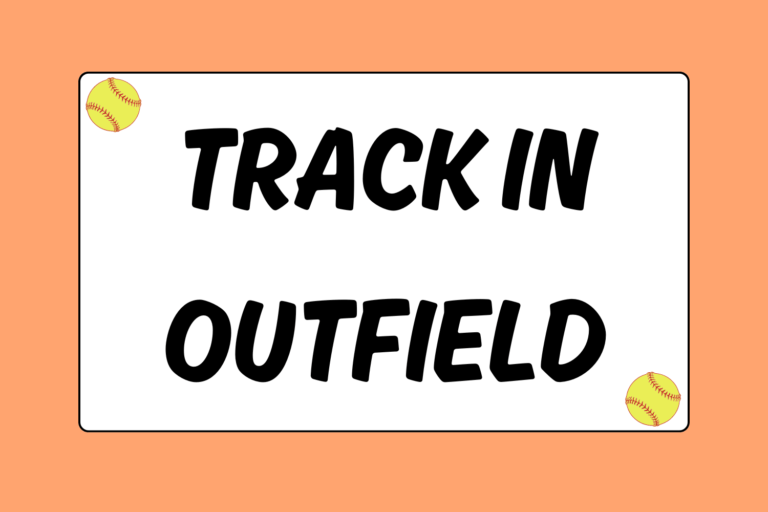Being able to properly execute a squeeze play is one of the most advanced plays in softball. Whether you are the batter, the runner, or one of the defenders, you need to know your role.
The general formula for a squeeze play involves the batter squaring around to bunt with a runner on third base. The play is typically used with less than two outs in order to trade a run for an out. In close games, teams may employ a squeeze play with two outs in an all-or-nothing rally for a run.
This guide will shed light on how to execute the squeeze play from every angle so you can remain calm and composed in any situation.
Performing Under Pressure
Whether you’re running the squeeze or trying to defend it, the play requires perfect execution from every position.
- The batter has to get the bunt down no matter where the ball is thrown. Ideally, the batter must also strategically place the bunt so that she will be safe at first while the runner at third scores.
- Base runners must time their lead-off perfectly to make it safely to the plate, even if the defenders try to make a play at home.
- The infielders are under pressure to make the right throw. With just a split-second to decide, they must know whether to throw to first base or to the plate, in which case the throw must be low and on target.
- The pitcher has the pressure of throwing an accurate pitch. A wild throw will likely send the runner home to score on a passed ball.
Everyone is under pressure in this situation. The probability of mental errors is high and players often rush when under pressure. Don’t let this happen to you.
The Batter’s Role in the Squeeze Play
The batter makes or breaks the squeeze play. Your coach is depending on you to protect the runner and execute the bunt to bring her home. If you succeed, you give your team a chance to score. If you fail, you hang your teammate out to dry on the third base line.
There are two types of squeezes that can be called, depending on the situation: The safety squeeze and the suicide squeeze.
The Safety Squeeze
The safety squeeze is often used when there are less than two outs because there is room for error. With this type of squeeze, the batter is under less pressure because the runner on third base will not advance until the ball makes contact with the bat.
The Suicide Squeeze
The suicide squeeze is an all-or-nothing play. The runner is going on the pitch, and as a batter you must get the bunt down. There is no room for error in a suicide squeeze, and the worst thing you can do is pop the ball up in the air.
Bunt Placement for a Squeeze
When you squeeze, you are surprising the defense. Do not go up to the plate and show the bunt early, this defeats the whole purpose of the play. Show your bunt at the very last second.
You also want to make sure you place your bunt in an advantageous position. The most favorable place to lay down your bunt is about five feet in front of home plate and towards either the first or third base line. Try not to bunt to the pitcher (unless she is incredibly slow) because she can often make the play more quickly.
This is the only time you do not want your bunt to drop right in front of the plate. The bunt needs to roll far enough out into the infield so that the catcher cannot just pick up the ball and tag the runner coming home.
The Runner’s Role in the Squeeze Play
As a base runner, the squeeze play is fairly easy to run. You will take a different approach for a safety squeeze than you will for a suicide squeeze, however, because each play calls for a different level of aggressiveness.
The Role in the Safety Squeeze
In a safety squeeze, the coach gives you the go-ahead to proceed to the plate if the bunt is laid down. Take a large enough lead that you can safely advance if the bunt is executed or you can get back in time if the pitch is missed and the catcher tries to pick you off.
The instant the bunt is down, go! If you hesitate or if the coach has to tell you to go, it’s too late. If the pitch is missed, proceed accordingly. You may have a chance to score if the pitch is wild and gets past the catcher.
The Role in a Suicide Squeeze
This is easy. Your role in the suicide squeeze play is to sprint as hard as you can to home plate, and slide in safely. Perfect your timing. As with a steal, you want to leave the base as soon as the pitcher releases the ball. Run as fast as you can to the plate without hesitation. You should be almost halfway down the base path before the ball even reaches the batter.
It is the batter’s job to protect the runner during a squeeze play, but that doesn’t mean you should run into a tag. If the batter misses the pitch, try to stop and get back to the bag by diving or sliding. More often than not, the catcher will throw the ball to the third baseman and you will get into a run down. If the ball is popped up, try to stop and dive back into third base.
Defending Against the Squeeze Play
The infielders involved in a squeeze play are generally the first baseman, third baseman, pitcher, and catcher.
First and Third Basemen
The key to being successful in a squeeze is to crash hard and make sure you get an out somewhere. If you have a play at the plate, toss the ball into the catcher’s glove to get the out at home (the ball should be thrown low).
If the offense executes the bunt, your play will most likely be to get the batter out as she sprints down to first. Be wary! Bunters often aim to push the ball past the crashing first and third basemen. Don’t get caught over-running the ball.
The Pitcher
Stay calm. You have been doing your job throughout the entire game so just throw to your catcher and relax. If you do throw a wild pitch, sprint to cover home. On instinct, an experienced catcher will go after a passed ball and throw it to where you should be covering the plate. Be there, and you can save an out. If the ball is bunted back to you, your play is the same as the corner infielders; look for the out at home, but make sure you at least get the out at first.
The Catcher
You are the key to this play. Know your pitcher and the strengths of the other team’s lineup. Remember that hitters love to bunt low pitches, so it may be best to try to get the batter to chase a high pitch. An outside pitch is a good one to call if there are two strikes on the batter. If the batter doesn’t angle the bat correctly, the bunt will most likely roll foul for the out.
If the batter is crowding the plate, call an inside pitch. Not only will it brush the batter off, but she might jump out of the way and miss the ball completely. If your pitcher can rely on her rise ball, call it. This pitch has the highest probability of resulting in a pop-up, which is excellent for the team on defense.
If the pitcher throws a wild pitch or the ball gets past you, hustle to the passed ball. The pitcher, first basemen, or third basemen should be covering the plate, so just turn and throw. The faster you get to the ball, the better chance you have of preventing the runner on third from scoring.
All or Nothing
The squeeze play is truly meant to be an all-or-nothing play, and it gives several players on the field an opportunity to make a clutch play.
On defense, don’t be vulnerable. Be prepared! Don’t crash so hard that you overrun the ball and make sure all throws are low and accurate. On offense, make contact and run! Be confident and never second guess yourself. Whatever you do, make sure you bunt the ball on the ground. A pop-up or missed bunt will likely give the defense a free out, killing your rally. As the runner, have fun with it. Your job, so long as the batter gets the ball down, is to score. There is no excuse not to score if the bunt is properly executed.





